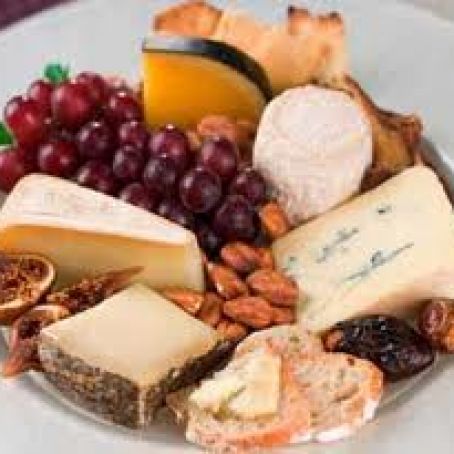Cheese Plate
By á-4922
 1 Picture
1 Picture
Ingredients
- Assortment of cheeses
- Variety of nuts
- Some fruit
Details
Preparation
Step 1
There are 5 major styles of cheese: Fresh, washed-rind, bloomy, pressed, and blue. Try to get an assortment of these, as well as some palate-cleansers (olives, nuts, bread) and flavor-enhancers (honey, quince paste, fruit preserves, or aged balsamic).
Fresh cheeses are soft, mild-tasting and creamy: Anything without a distinct rind is considered a fresh cheese. They range in flavor and texture from fresh mozzarella, ricotta, or goat cheese to salty brined feta.
Washed-rind cheeses are the funky ones: They're bathed in liquid, whether beer, wine, or water to encourage the development of helpful bacteria that add tons of complex flavor. Meunster's the most common washed-rind cheese available here; you might also see Taleggio or Raclette in your store. They're generally runny inside with semi-firm outsides.
Bloomy cheeses are rich and intense, with creamy insides and a semi-firm, edible white rind. Brie, traditionally made with raw milk (though, sadly, not in the USA), is a member of this family. Other favorites are Brillat-Savarin, Pierre Robert, or the super-runny St. Marcellin.
Pressed cheeses are firmer, with harder rinds. Most hard and semi-hard cheeses fall into this category, from Parmigiano-Reggiano, Romano, and Asiago, to Cheddar, Gouda, and Gruyere. (Gruyere is also washed with brine, but not to the same degree as the washed-rind cheeses) Their flavors are all over the map — Parmigiano-Reggiano is deep and nutty; aged Gouda is butterscotchy and young is creamy; and Cheddar can taste like anything, depending on its age.
Blue cheeses are funkily intense, shot through with veins of penicillin. They're usually creamy, sometimes with a salty crunch in spots. Stilton and Maytag Blue are classics, as is Roquefort, but check out Cabrales for truly complex flavor or mellow, nutty Fourme d'Ambert.

Review this recipe